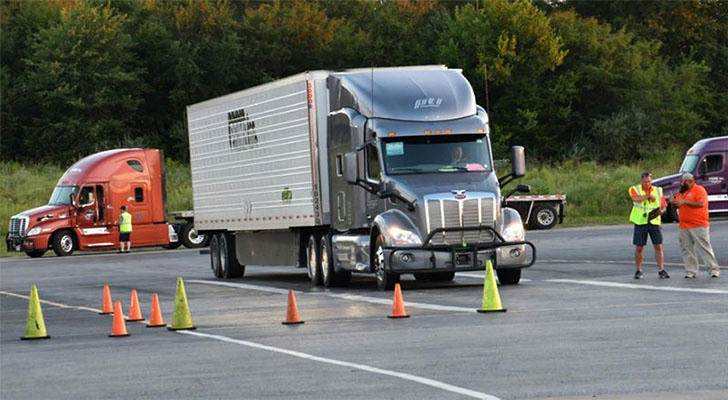CDL Training: Unlocking a High-Paying Career in Trucking
In today's rapidly evolving economy, the trucking industry plays a vital role in connecting cities and states, ensuring the efficient circulation of goods and services. As demand for qualified truck drivers continues to grow, CDL (Commercial Driver's License) training has become a promising career path. Through professional CDL training, you can acquire the necessary skills and knowledge to embark on a high-paying and stable career in trucking.

What is CDL?
CDL is a specialized driver's license that allows you to operate heavy vehicles, such as trucks and buses. Depending on the type and weight of the vehicle, CDLs are categorized into different classes, including Class A, B, and C. A Class A CDL permits you to drive vehicles with a gross vehicle weight rating (GVWR) over 26,001 pounds, including tractor-trailers.
Why Choose CDL Training?
Choosing CDL training offers several advantages:
High-Paying Career:The trucking industry has a high demand for qualified drivers, resulting in competitive salaries and excellent benefits. According to the Bureau of Labor Statistics (BLS), the median annual salary for heavy and tractor-trailer truck drivers was $54,320 in 2023, with top earners making over $76,780.
Job Opportunities:With the rapid growth of e-commerce and logistics, the demand for truck drivers is consistently increasing. The BLS predicts a 5% growth in heavy and tractor-trailer truck driver positions from 2023 to 2033.
Career Advancement: The trucking industry offers rich opportunities for career advancement. You can start as a driver and progress to roles like fleet manager, dispatcher, or trainer.
Flexible Work Schedule: Many trucking companies offer flexible work schedules, allowing you to better balance work and life.
CDL Training Content
CDL training programs typically include:
Theoretical Knowledge:Learning traffic regulations, safety driving knowledge, vehicle maintenance, and operating procedures.
Practical Operations:Under the guidance of professional instructors, you will practice actual driving operations, including vehicle inspections, starting, shifting gears, turning, backing, and parking.
Safety Driving:Learning how to drive safely in various weather conditions and road situations, as well as handling emergencies.
Cargo Handling:Understanding different methods for loading and unloading cargo and safety precautions.
Choosing the Right CDL Training School
Selecting a suitable CDL training school is crucial. Here are some tips:
Certification:Choose a school that is certified by relevant authorities to ensure the quality of education and compliance with industry standards.
Faculty Expertise:Ensure that the instructors have extensive driving experience and teaching expertise.
Curriculum:** Check if the curriculum is comprehensive, covering theoretical knowledge, practical operations, and safety driving.
Facilities and Equipment:Evaluate the school's facilities and equipment to ensure they are modern and suitable for practice.
Job Placement Support:Look for schools that offer job placement assistance to help you find employment after completing your training.
CDL Training Steps
CDL training typically involves the following steps:
Admission Application:Submit your application and provide required documents such as identification and educational background.
Medical Examination:Undergo a medical examination to ensure you meet the physical requirements for driving heavy vehicles.
Theoretical Study:Attend theoretical classes to learn traffic regulations and safety driving knowledge.
Practical Training:Practice driving under the guidance of instructors.
Exam Preparation:Participate in mock exams to familiarize yourself with the exam format and content.
Take the CDL Exam:Pass both the theoretical and practical CDL exams.
Obtain CDL Certification:Receive your CDL certification after passing the exams.
Cost of CDL Training
The cost of CDL training varies depending on the school and program. Generally, CDL training costs between $4,000 and $8,000 in the United States.
CDL Training Aftermath: Career Development
After obtaining your CDL, you can work for various types of trucking companies, including:
Long-Haul Trucking Companies:Responsible for transporting goods from one state to another.
Short-Haul Trucking Companies:Focus on transporting goods within cities or regions.
Specialized Transport Companies:Handle the transportation of specific types of cargo, such as hazardous materials, refrigerated goods, or heavy equipment.
Trends and Outlook for the Trucking Industry
The trucking industry is a vital pillar of the U.S. economy, generating $987 billion in revenue in 2023. Despite ongoing driver shortages, the industry continues to experience steady growth. According to data from the American Trucking Associations (ATA), the U.S. trucking industry faced a shortage of approximately 78,000 drivers in 2023.
Conclusion
CDL training is a valuable investment that can unlock a high-paying and stable career in trucking. By choosing the right CDL training school and diligently learning and practicing, you can acquire the necessary skills and knowledge to become a qualified truck driver and succeed in the trucking industry.
